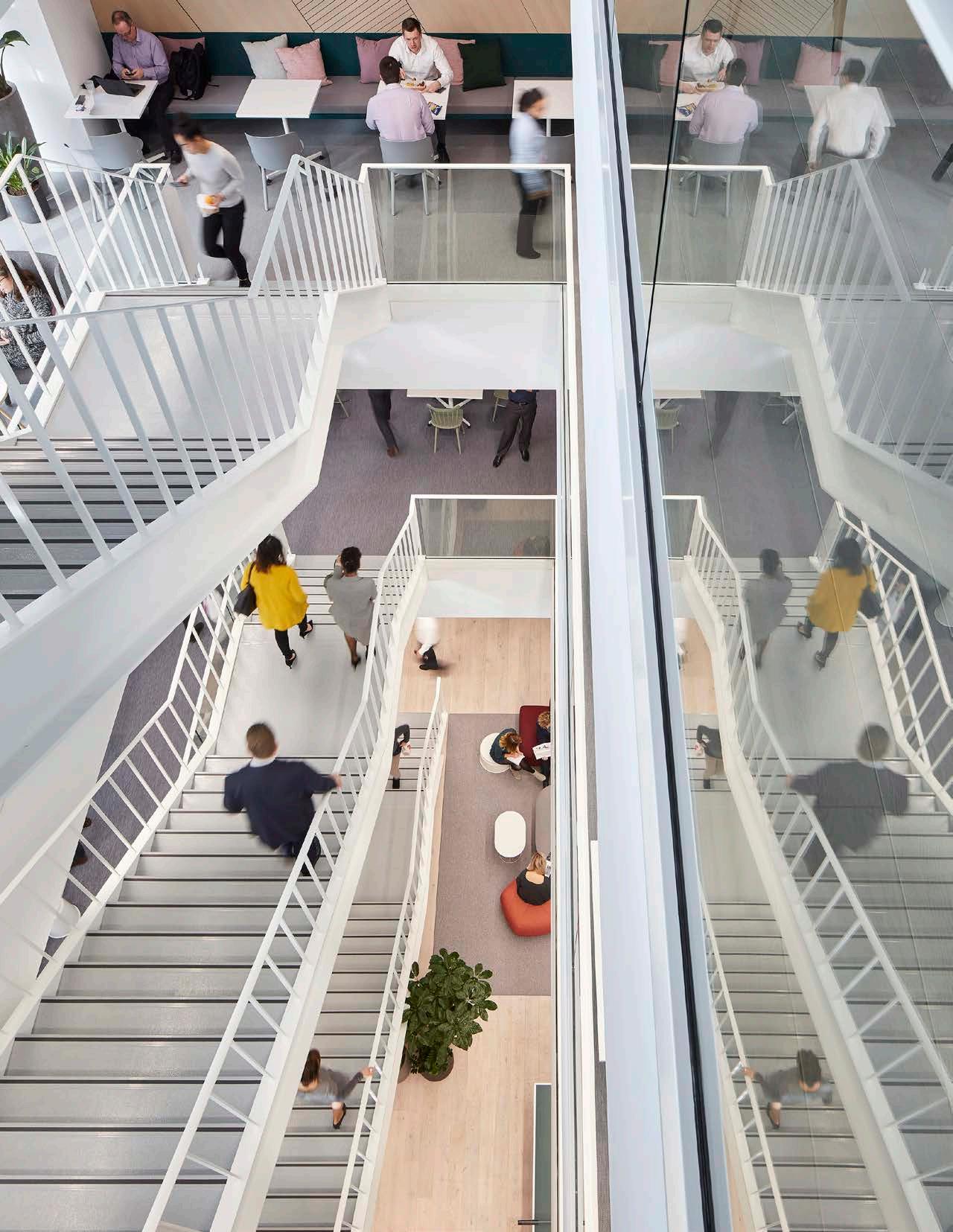
13 minute read
WORK IN MOTION
from Work in Motion
by AECOM Design
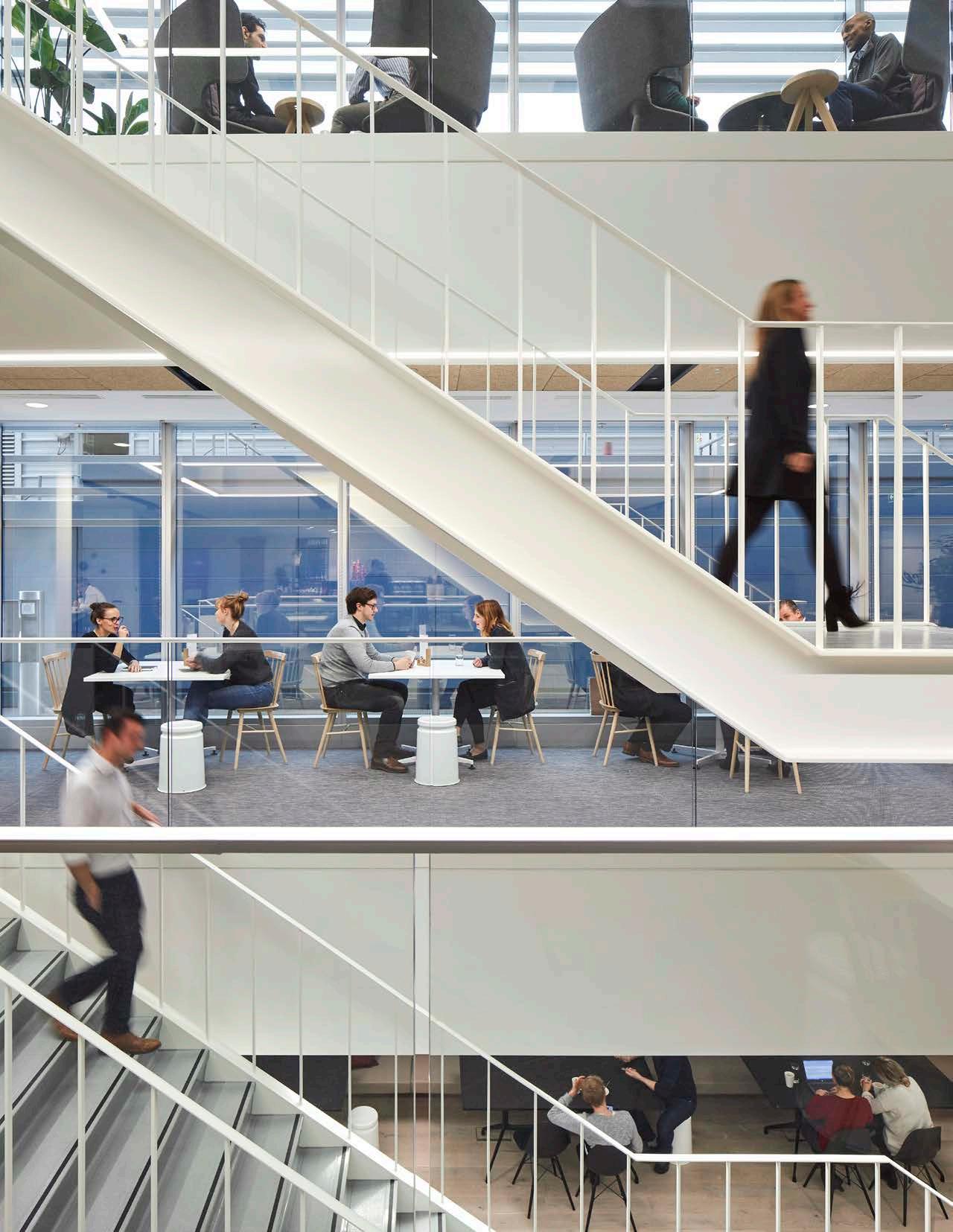
Three trends that will shape the future office. WORK IN MOTION: THE FUTURE OFFICE
Advertisement
Work has been disrupted.The way we do business is changing. Digital technologies are reshaping not only what we do, but also the ways in which our workplaces are imagined, designed, built and operated. Driven by automation and AI, the Fourth Industrial Revolution will make some jobs obsolete in the future—with 35% of jobs at risk of computerisation over the next 20 years— but it will also create many others. These new jobs will prioritize generation of ideas, creativity and collaboration. Offices must provide places that foster these activities and nurture the valuable staff performing them. As workplaces change, the desire for work-life balance has given way to work-life overlap and an ‘always on’ culture. Work now takes place anytime, anywhere, so many people now go into the office only when they have a specific reason. Demographics are also shifting, as there are now four generations (Figure 2) in the workplace. Offices must support, sustain and adapt to their diverse needs and talents while continuing to serve the fundamental purpose of the workplace—to foster constructive interaction and collaboration.
Economic context
BABY BOOMERS
Postwar growth, Cold War
GENERATION X
MILLENNIALS / GENERATION Y
CENTENNIALS
Invention of the internet
Two recessions
Social media, war on terror, WikiLeaks
Work style
Management approach
Motivation
Health + wellbeing
Collaboration
Work location
b. 1946-1964
Process-driven
Taylorist
b. 1965-1984
b. 1985-1996
b. 1997-
Results-driven
Lean
Outputs-driven
Autonomous and opportunity driven
Agile/scrum
Mentoring
Meaning in life from work
Not prioritized
Independence
Office
Work/life balance
Work/life blend, team collectiveness
Fulfillment, choice
Managed around work
Self-reliance
Network of places, office, client home
Priority, work isn’t everything
Tech driven, always monitoring
Group motivated, team working
Anywhere, anytime work follows me
Open-source
Anywhere, virtual, always connected
A new age of work and workplace As the world of work changes, there are three major trends that will shape the focus of those who will develop, manage and use the future office.
1DESIGN TO ADAPT WITHIN A CIRCULAR ECONOMY
economy model with materials and resources mined, manufactured, used and then thrown away. The negative impact of this process is considerable: the built environment consumes over half of the world’s extracted materials and, in the EU, produces around one-third of total waste generated. This status quo cannot hold with global demand for resources surging, raw materials becoming harder to extract and the threat of climate change intensifying. The circular economy model offers an alternative, more sustainable and regenerative approach, prioritizing the retention and refurbishment of buildings over demolition, and
designing for the separation and reuse of materials at the end of a building’s life. Too many current buildings are designed with little thought for the future, potentially creating a legacy of obsolete architecture composed of complex components irretrievably melded together. This locks away precious resources, making them forever unavailable to subsequent generations. We can extend buildings’ lives and enable reuse of their components by designing them right from the start to include modular elements that can be adapted, reconstructed and easily deconstructed.
Such adaptive buildings as Park 20|20 in Amsterdam give users the experience of a traditional, permanent structure while using modular components within ‘Cradle-to-Cradle’® principles, allowing workplaces to be more responsive, cost-effective and sustainable. Similarly, greater energy efficiency must be a priority for nextgeneration workplaces, not just to reduce costs but also to meet global emissions targets. As a result, the future of office power will be electric, with more buildings generating their own power via built-in solar panels and using heat pumps and heat recovery to become energy self-sufficient.
2DATA-ENABLED COLLABORATION AND CUSTOMIZATION
Digital tools are already revolutionising the ways in which we live, work and communicate. The big question, of course, is always: what’s next? But technology cannot be an end in itself; innovation purely for innovation’s sake quickly becomes dated. What matters is ensuring that these innovations support workplace users, enabling them to work more efficiently together.
A more agile approach To that end, with more of us equipped to work on the move, there is a growing need for flexible workplaces designed to support the “always on,” mobile office worker. This, in turn, is having a profound effect on the wider market for office space, both financially and physically.
Unsurprisingly, this move to more agile work is influencing the design of the future office. A range of formal and informal areas for meeting and collaborative work are now interspersed with quieter areas, providing a wide variety of task-specific workspaces and, crucially, providing valued staff with choice and autonomy. Desks, often shared rather than owned, are arranged in team neighborhoods to promote a sense of identity and to aid communication and collaboration. Cafe facilities and break out areas are provided to encourage a diverse workforce to meet and socialize. The emphasis on communication has clear design implications: floorplates need to be large and open, team ‘silos’ should be discouraged and different floors should be interconnected by staircases and atria, to promote the mixing of people not only within teams but across them (Figure 1). In the future, new technologies could help to make collaboration and individual work even more efficient; for example, voice and mood sensors in office buildings could recognize the energy of impromptu conversations between colleagues and ‘bring the meeting space to the people’ through a temporary acoustic bubble that provides privacy and protects the concentration of those working nearby.
A personalized environment The modern ‘work hard, play hard’ culture means that people want choice over their work and working environment. Technology can help provide this. The increasing prevalence of sensors in new workplaces will help future offices to adapt to their users’ needs in every area. The Edge building in Amsterdam, for example, is fitted with 28,000 sensors. Its digital system are connected to the Internet of Things and
controlled by a single network which the building managers can view via a central dashboard. The LED-lighting system monitors temperature, movement and light levels within the building, and also targets resources to where they are most needed. Future technology could personalize environmental conditions in each setting, in such ways as learning people’s individual preferences for lighting levels and temperature. Voice technologies may develop the capacity to take minutes of a meeting and dispatch to the participants personalized lists of agreed actions. Adopting a comprehensive approach to sensor data capture, storage and accessibility cannot be an afterthought. It needs to be built in from the start, both virtually in Building Information Modelling (BIM) and physically within the building. The installation of sensors is relatively inexpensive if carried out during construction, but is difficult and more expensive to retrofit. The sensor-based workplace must also be supported with the right skills and tools to enable building managers to analyze the wealth of data that will be generated.
3YOUR PEOPLE WILL ALWAYS MATTER MOST In the future office, more and more of our routine tasks will be automated. But as Geoff Colvin, the author of ‘Humans are underrated’, asserts, our very human ability to empathize, collaborate and innovate will remain essential to the organizations for which we work. This means that while the size of the human workforce may decrease, the value to organizations of employees and
the highly-skilled work they do will only grow in importance. As a result, those providing and managing office space need to start considering the office user as the client. In the years ahead, workplace design will be increasingly focused on creating a community base—virtual or physical—that supports the building users’ comfort, creativity, productivity and job satisfaction. We have seen increased emphasis on employee wellbeing and office quality, as more and more organizations recognize that employees are their most expensive and valuable asset and that wellbeing extends beyond physical heath. However, understanding and measuring the impact of workplace environmental factors on such issues as employee motivation, satisfaction, productivity and mental health is complex. An environment purposely designed around wellbeing must address a wide range of factors. For example, AECOM’s holistic wellbeing assessment at work (see Figure 3) embraces six dimensions of health: physiological (getting through our day-to-day work without undue fatigue or physical stress); psychological (support for our mental health and emotional balance); social (feeling connected and part of a community), intellectual (able to use and
develop our knowledge and skills to perform well), values (the match between the organization’s and the individual’s values); and material (experiencing a sense of fairness in terms of the availability, quality and quantity of rewards). Designs should reflect this concern for wellbeing; furniture should embody ergonomic design principles; people should be encouraged to move around the office, including using the stairs; and large and small spaces should be provided for socializing, relaxing or quiet chats. These spaces should be at a human scale and engender a sense of pride and belonging, with welcoming, comfortable team areas that express a clear team identity.
The implications for the design process Technology will affect designers, too. Many routine parts of the design process will be automated, leaving designers free to focus more on identifying and meeting the needs of building occupants. Virtual reality will be used to share ideas with the potential building users; design will become a more research-driven and collaborative process. One of the biggest challenges in driving workplace change is the relationship between an ongoing cultural change program and a
build project that has a fixed start and end date and follows the principles of project management. The build project creates an emphasis on timelines, milestones, risk mitigation, build quality, the supply chain and, importantly, budget, that often skews focus away from crucial people-oriented elements. Project teams will therefore increasingly be required to integrate change management and project management when delivering schemes, securing buy-in and working closely with developers and occupiers to ensure workers feel engaged.
The future is now This is a pivotal moment for the office—this most familiar of spaces is undergoing significant and extensive change as we enter the next chapter in its history. This change is having an impact on workplace designers, developers, occupiers and users that cannot be overstated, and will continue to be felt for decades. Technology is transforming the nature of work, but that doesn’t determine what our offices should be like. Equally, workspace design shouldn’t be driven primarily by aesthetics for aesthetics’ sake. We want our workspaces to say something about what the client stands for, but the bigger issue is
whether the spaces we provide help our organizations to be effective, minimize environmental impact, sustain our environments and communities, and support our wellbeing in its widest sense. These issues are profoundly related to design, but not in any simple or environmentally deterministic way. Our behaviour is shaped by our understanding of the buildings we inhabit, so designers must focus on the people for whom our buildings exist, what they and their organizations want to achieve, and how building-supported technology can help them. We believe that in the future, building users will become the client. It is a truism to say that being human is our differentiator, but it is specifically our creativity, innovative capabilities, empathy, imagination and glorious, messy unpredictability that separates people from machines. Place plays an important part in this human experience. The offices of tomorrow will put the needs of people at the center of it all.
Mental and emotional
Intellectual
Physiological
H E A L T H + W E L L B E I N G N E E D S T O B E C O N S I D E R E D W H O L L Y
Values
Material
Social
Figure 3 Wellbeing at work
To learn more, please look for our recently published book from RIBA available on Amazon. https://www.amazon.com/Future-Office-Nextgeneration-workplace-design/dp/1859468454
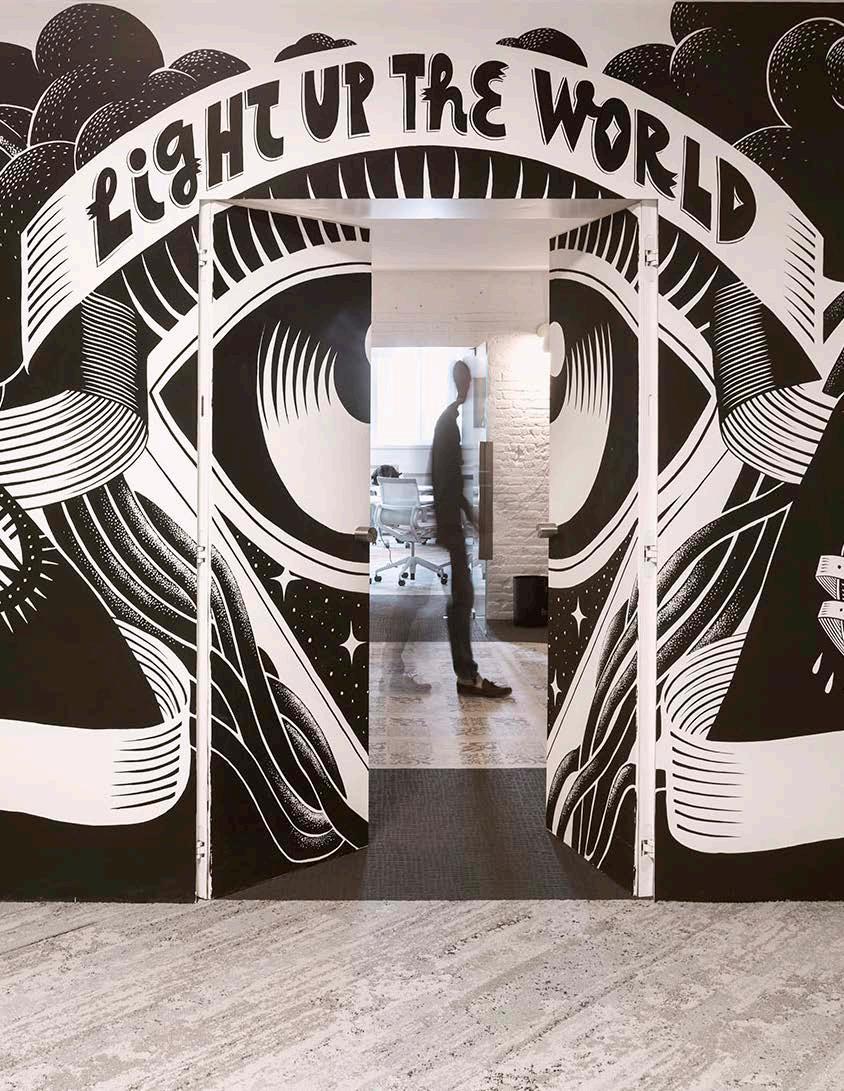
Business evolution drives workplace transformation
AECOM and Accenture Spain have been working together since 2008, but it wasn’t until 2014 that the company looked to evolve its work environments to include more innovative spaces. This led AECOM to deliver eight projects, each challenged to go beyond the previous, in accordance with Accenture’s culture of constant evolution in business.
The two most notable projects were the transformation of the Corporate Offices in Madrid and the DIGITAL HUB, a space for collaboration, co-creation and customization for each client’s experience, which was designed and executed in only six months.
The Digital Hub was created to represent and support Accenture’s leadership in the digital transformation market and digital solutions strategies. The space supports areas for collaboration and cocreation to be used with clients and other partners, like young startups with great ideas and unique knowledge.
The entire space can be reconfigured. Forty percent of the space is dedicated to client experiences and 60% is collaborative workspace. This flexible, high-energy showcase space has been a magnet for clients, partners, employees and new recruits alike.
Innovation and high tech fit into a historic modernist landmark, La Rotonda in Barcelona. “
”
During demolition we unveiled old existing brick which we left exposed, providing this quiet area with a warm, contemplative and historic retreat.
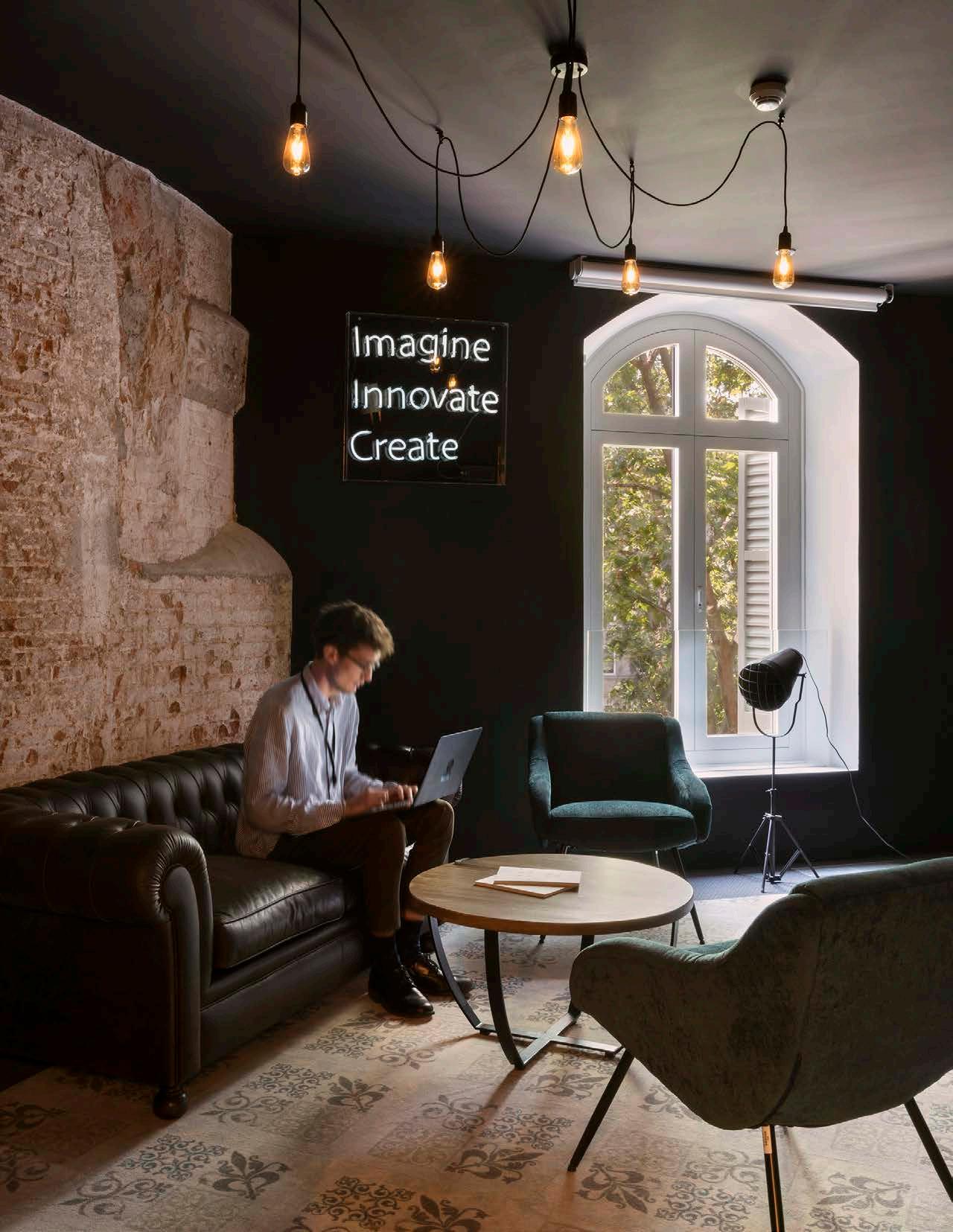
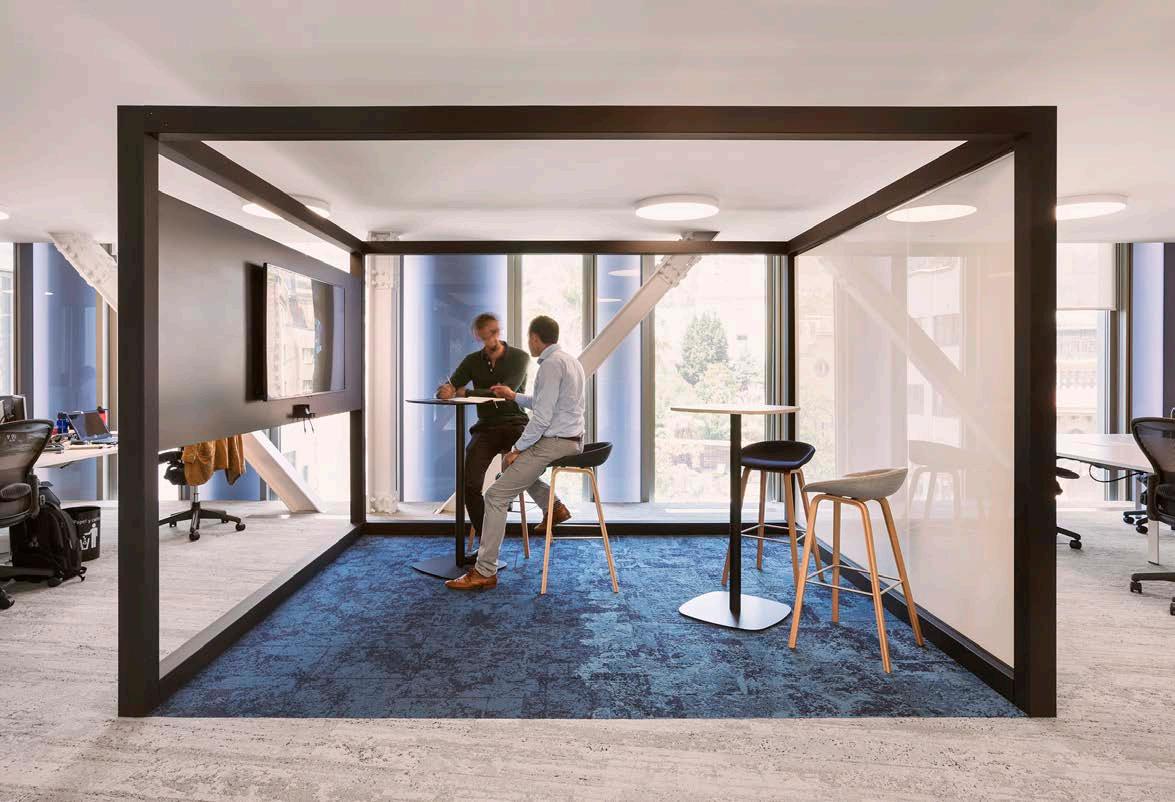
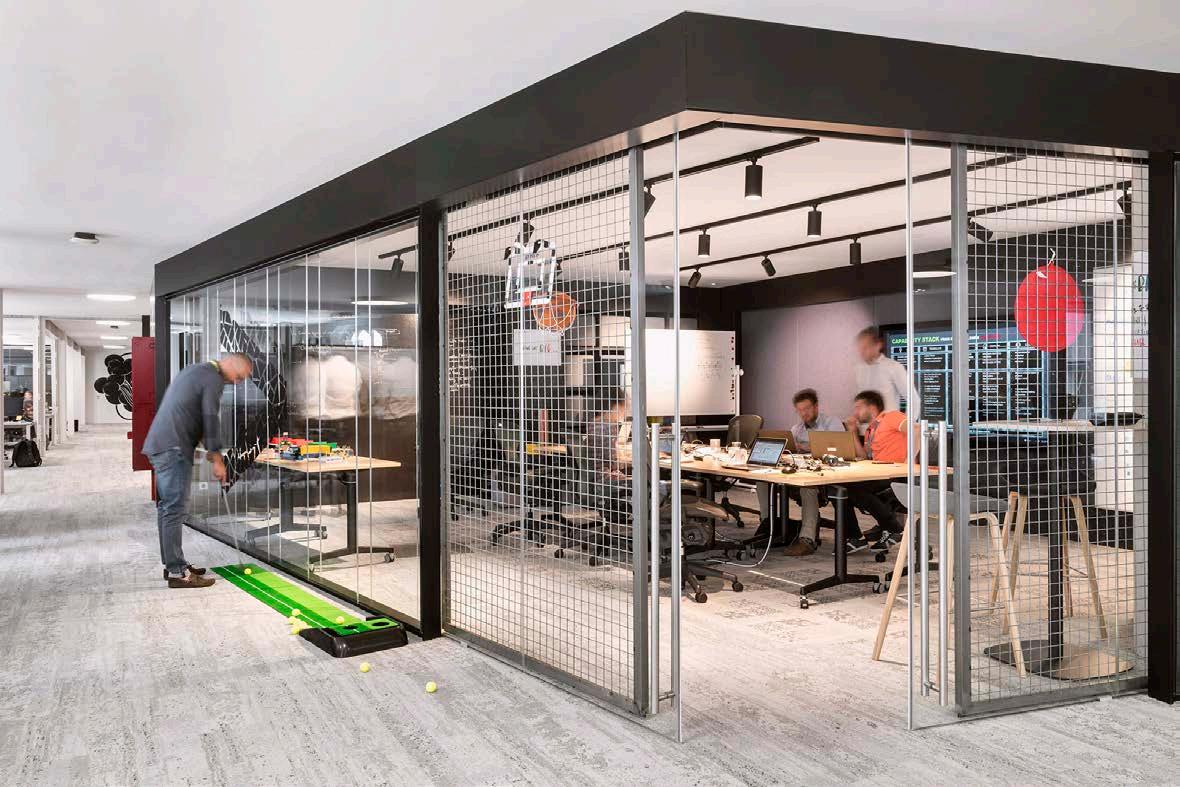
Designed to measure impact
AECOM created a workplace strategy for National Grid, an international electricity and gas company, that reflected their work styles, increased collaboration and knowledge sharing across the businesses and created savings of £8-10 million per year in operating costs. Additionally, in an industry first, National Grid objectively measured the impact on productivity, through a series of cognitive tests, which revealed an 8% increase in performance.
Before working with AECOM, National Grid felt that their buildings were poorly utilized and no longer suited the way they worked. A workplace strategy was developed, using a research- and evidence-based approach, and with full engagement from the teams and departments involved. This was first implemented in a one-floor pilot space, at the company’s Warwick HQ site, before embarking on a full project roll-out.
Starting with senior leadership interviews and visioning sessions, we were able to articulate the vision and key drivers for the space. These were to create space that better supports and expresses the aspirations of the business, drive space harder to allow room for growth in the current building and increase knowledge sharing across the businesses, in order to drive efficiencies and innovation. Further research and data collection activities included utilization studies, online surveys and workshops.


We translated this strategy into a concept design. The main objectives of the design were:
• Increase ad hoc communication by providing informal collaborative space and project areas distributed throughout the floor. • Provide greater choice of different settings to accommodate various working tasks and styles, which would also break up the regimented feel of the original floor plan. • Provide a more stimulating and creative environment representative of National Grid’s culture and brand.
In parallel with the design process, we also implemented a comprehensive program of change management which created open dialogue with staff and a process which was undertaken in partnership with the business.
This approach created a strong sense of ownership for the final outcome, ensuring that change has staying power in the long term.. AECOM continues to work with National Grid as they roll out the solution across their portfolio.
“
AECOM has provided us with a well-designed office environment that creates a buzz and really helps in building our culture of collaborative working. Simon Carter Head of Corporate Property, National Grid ”

